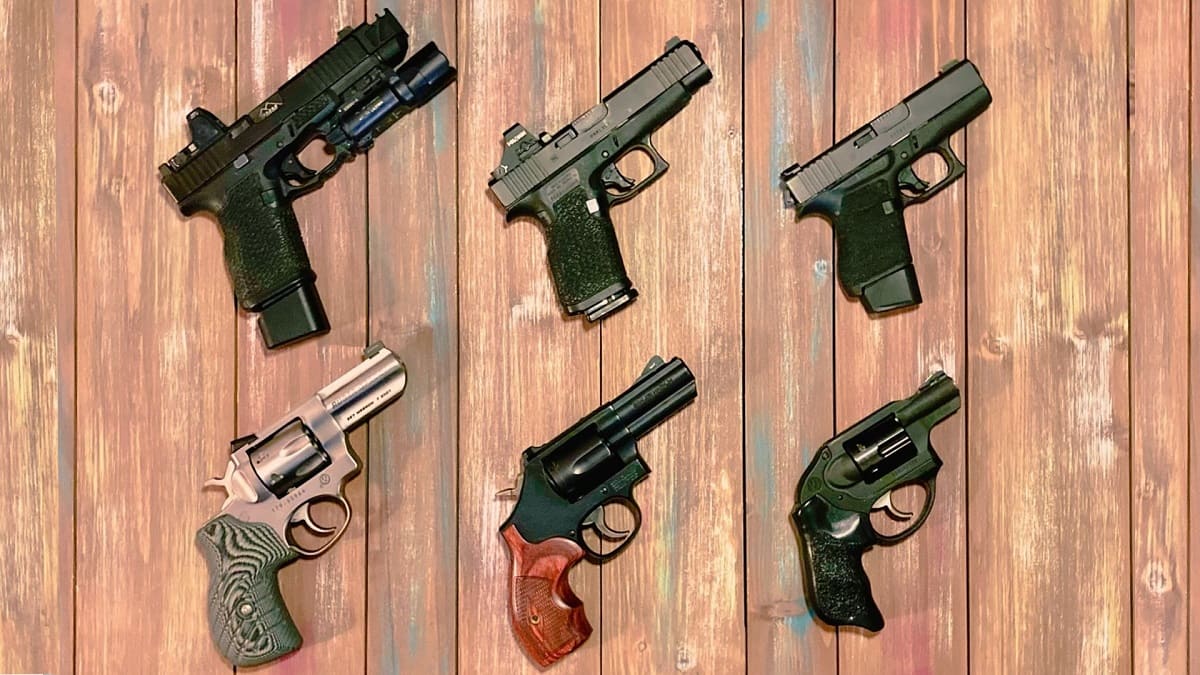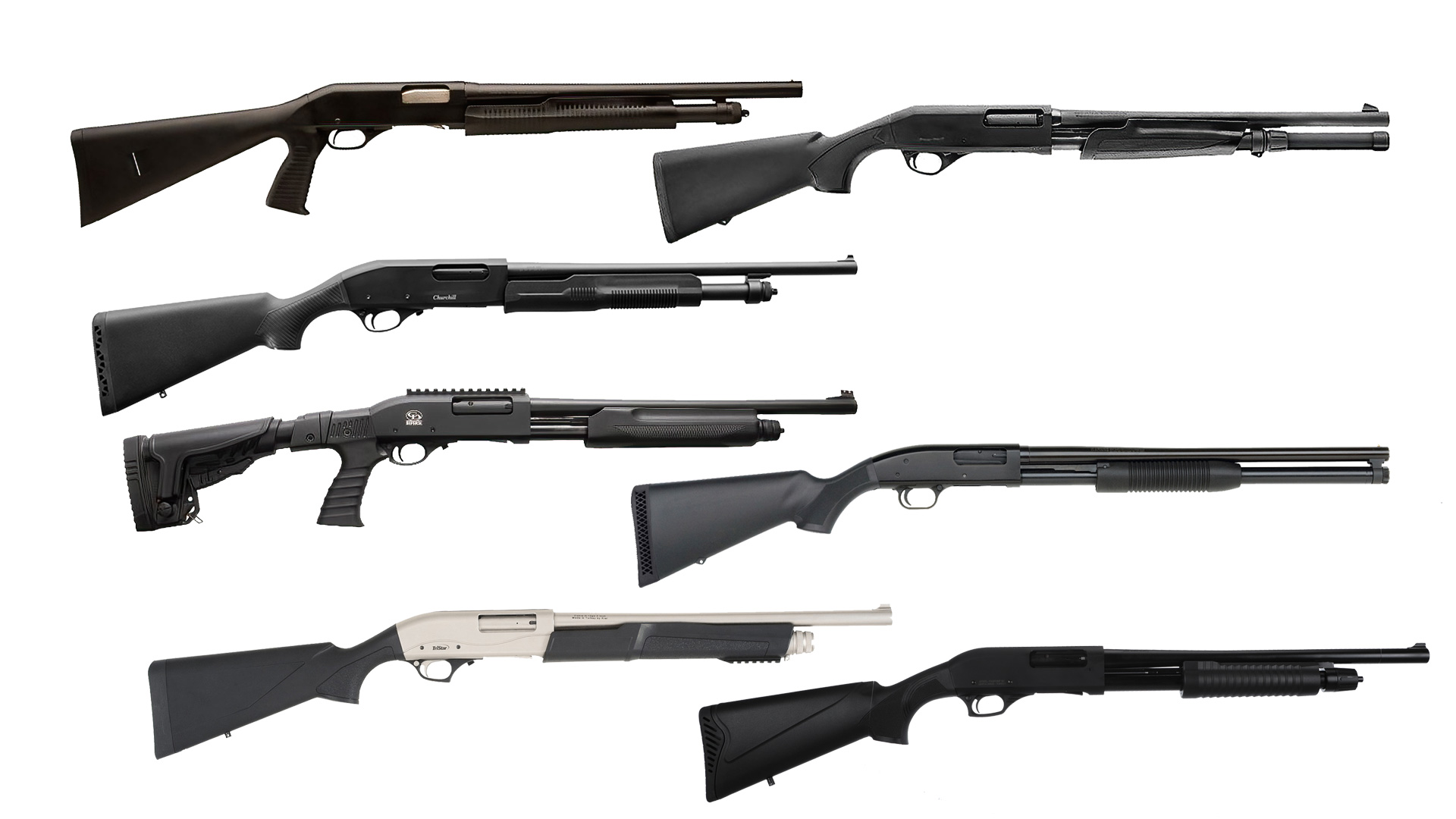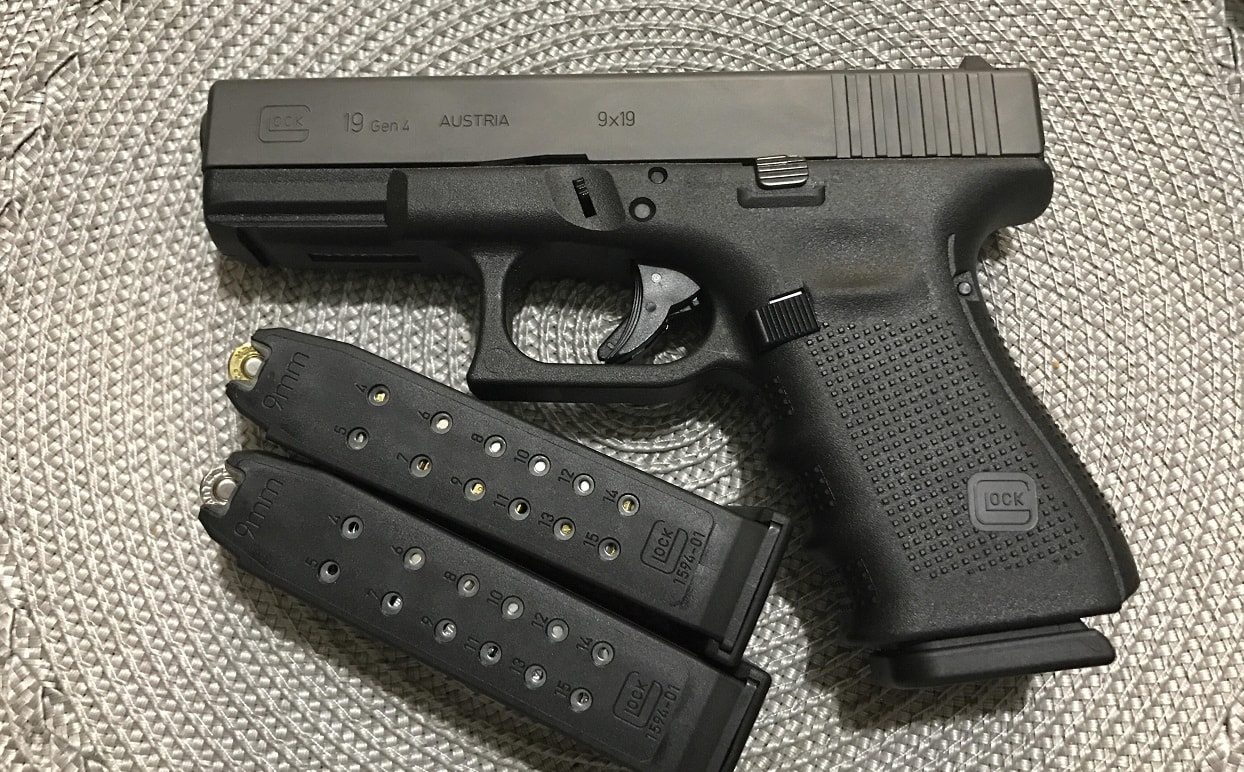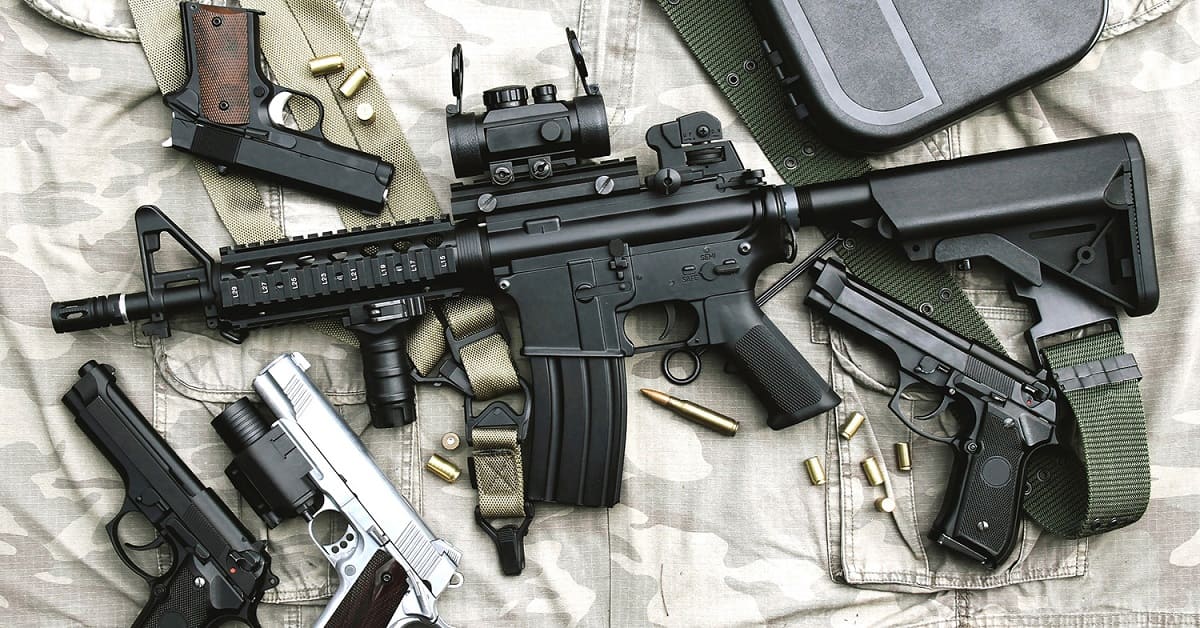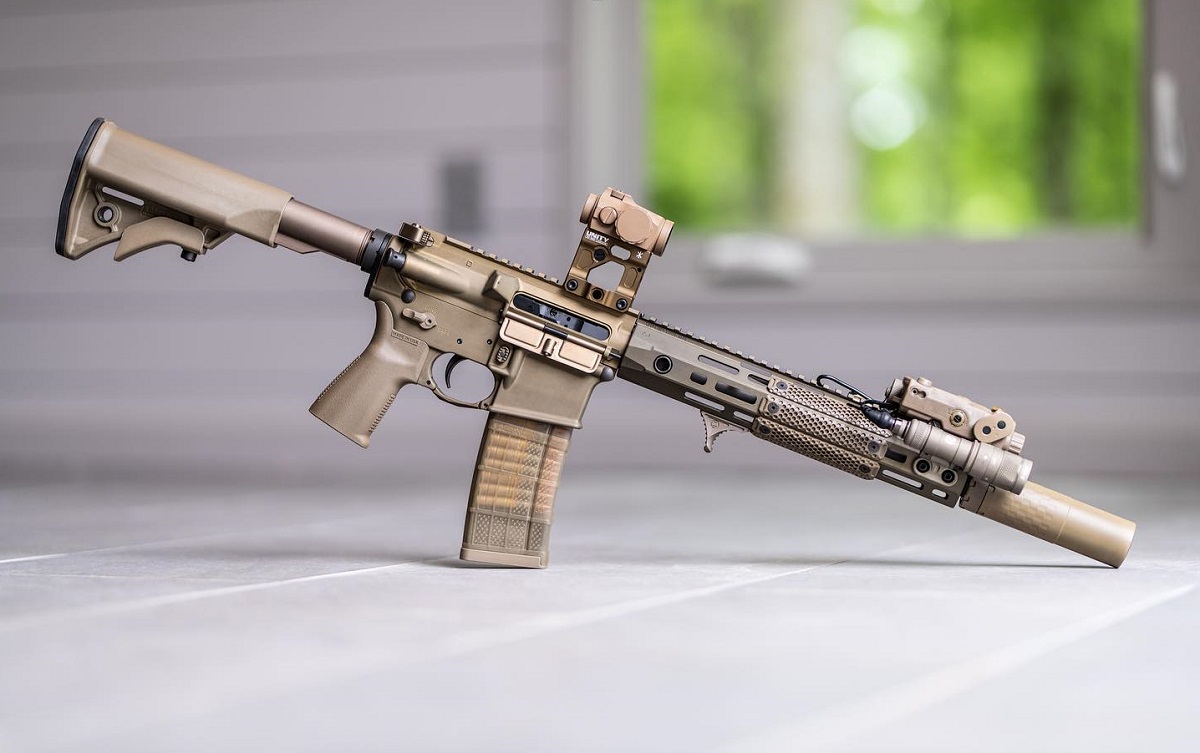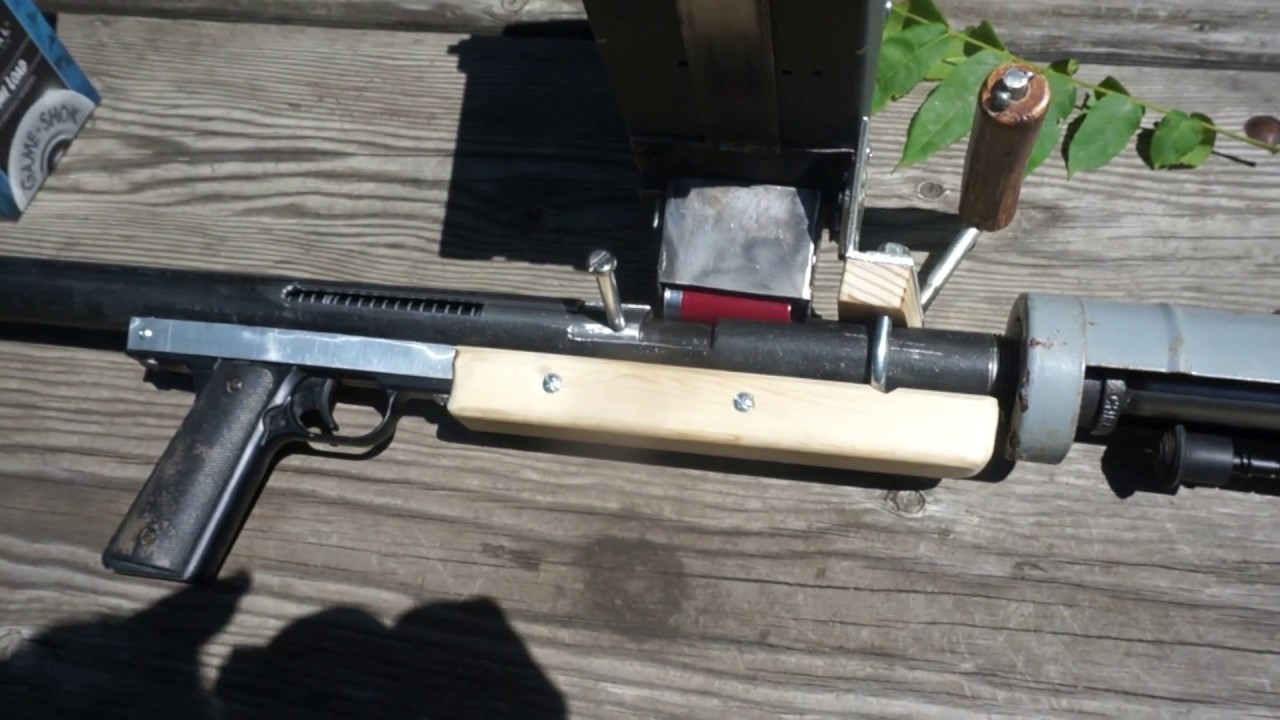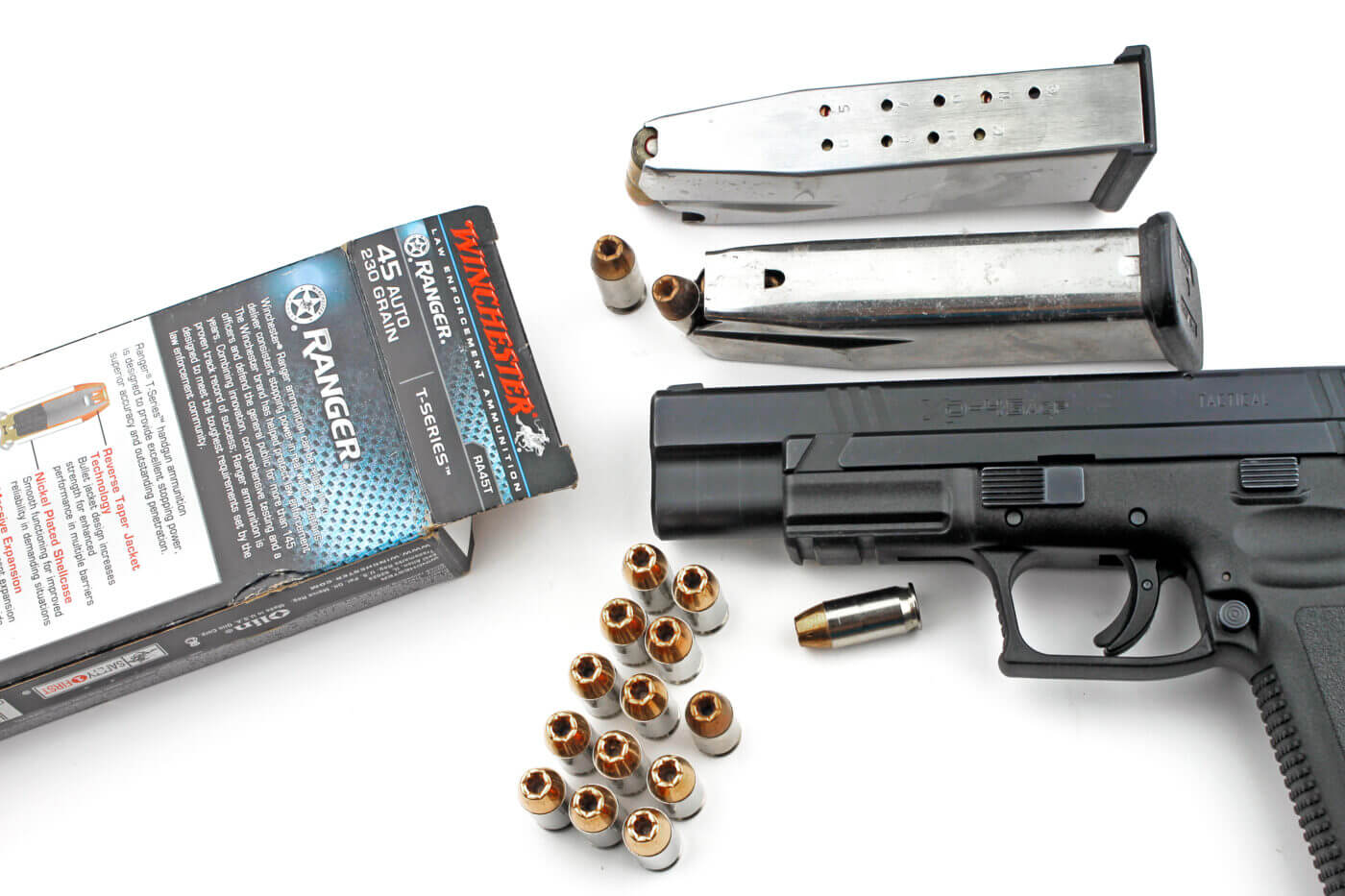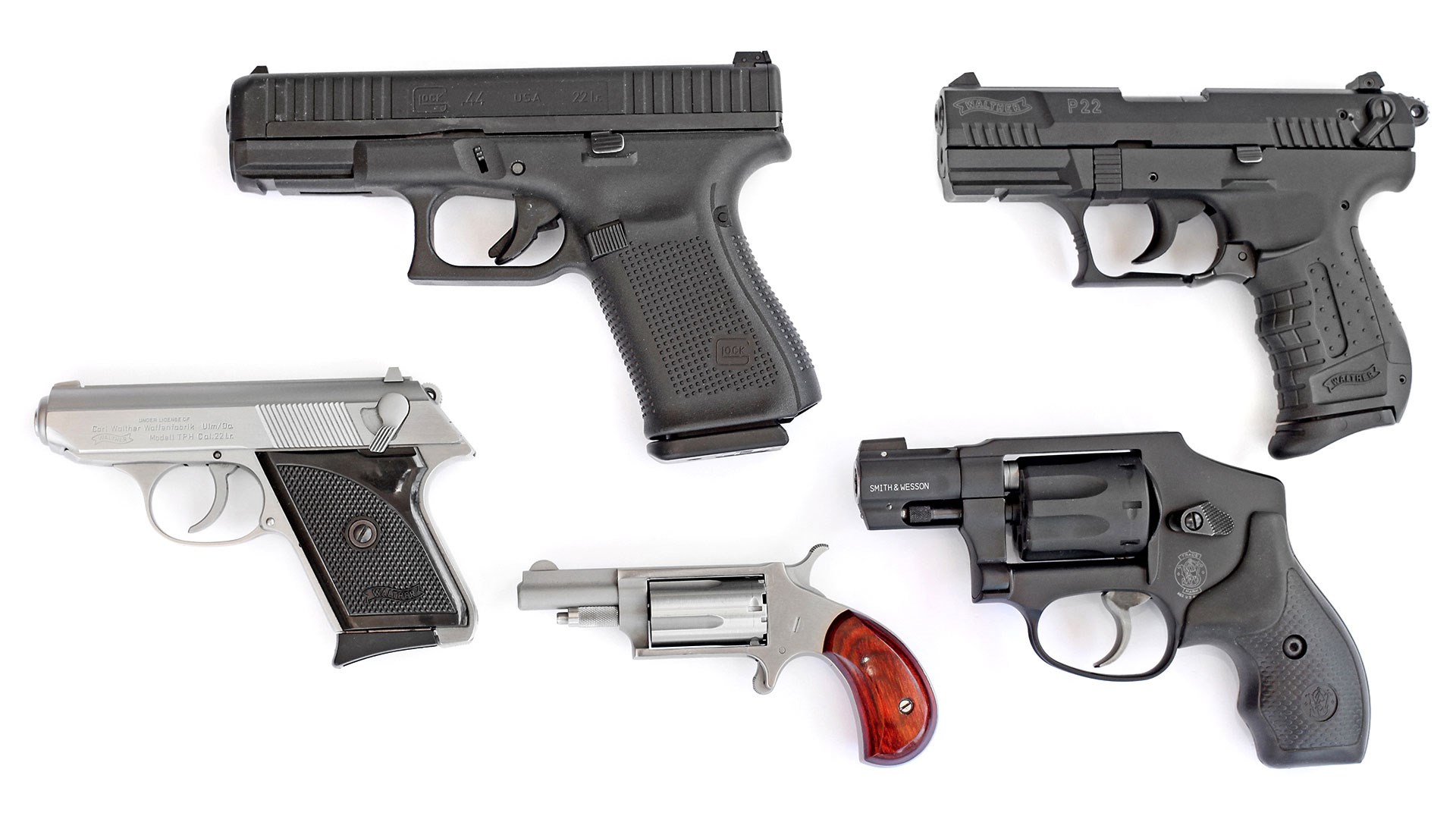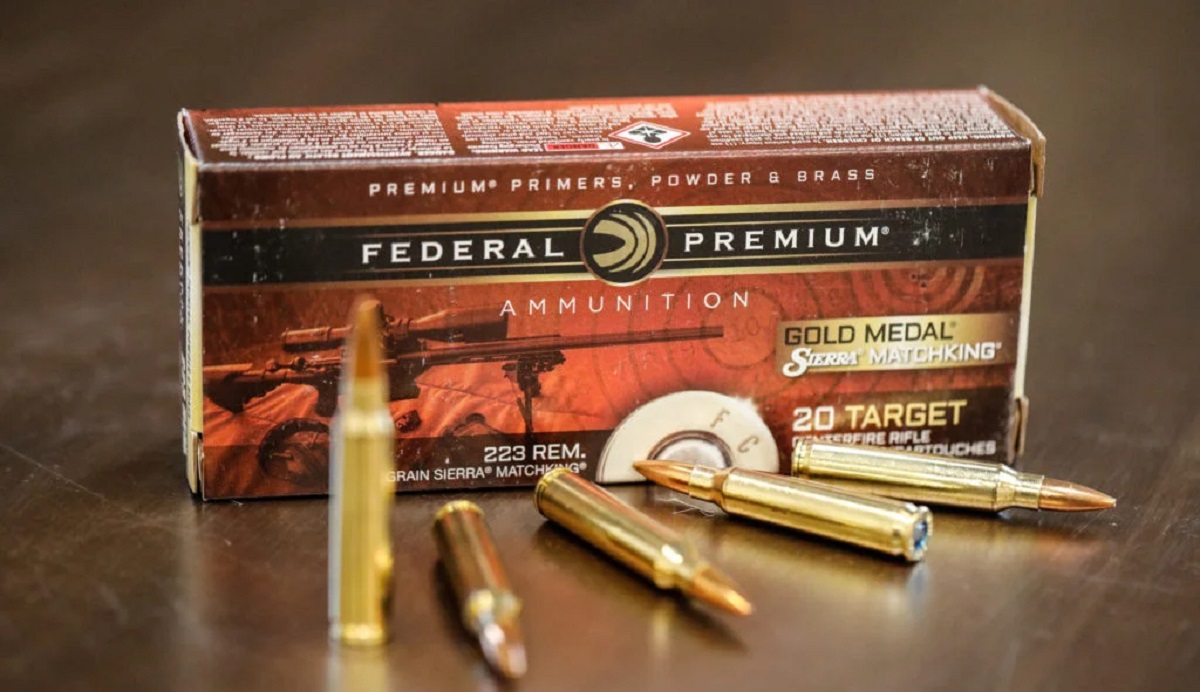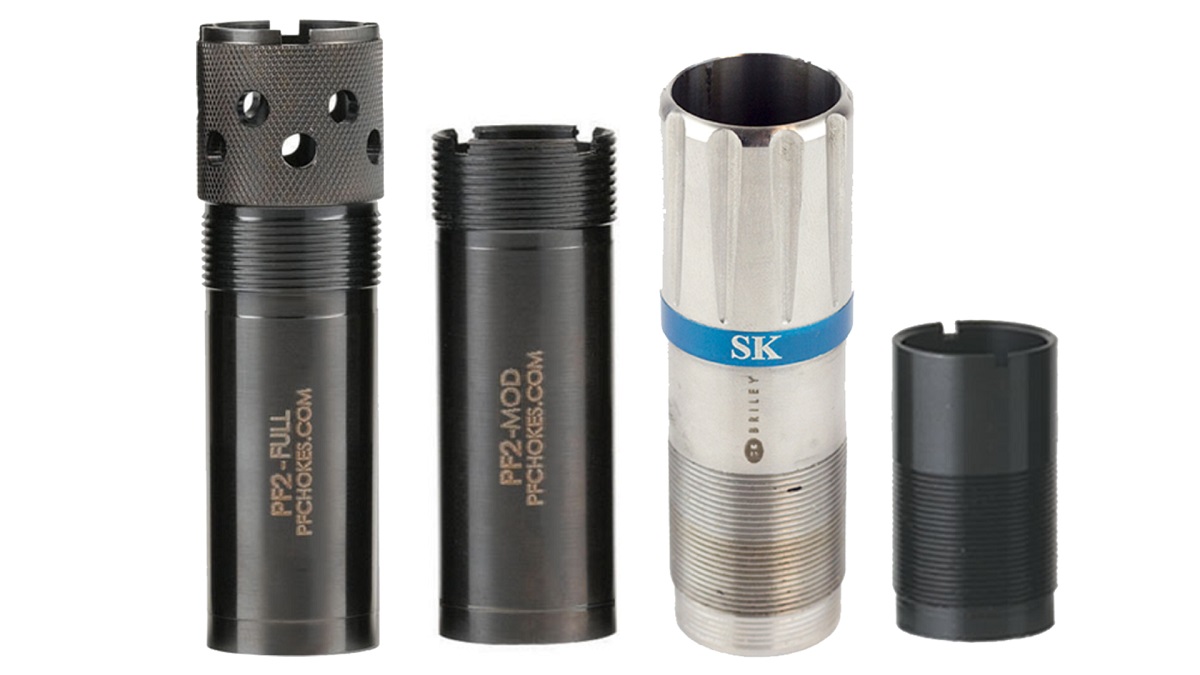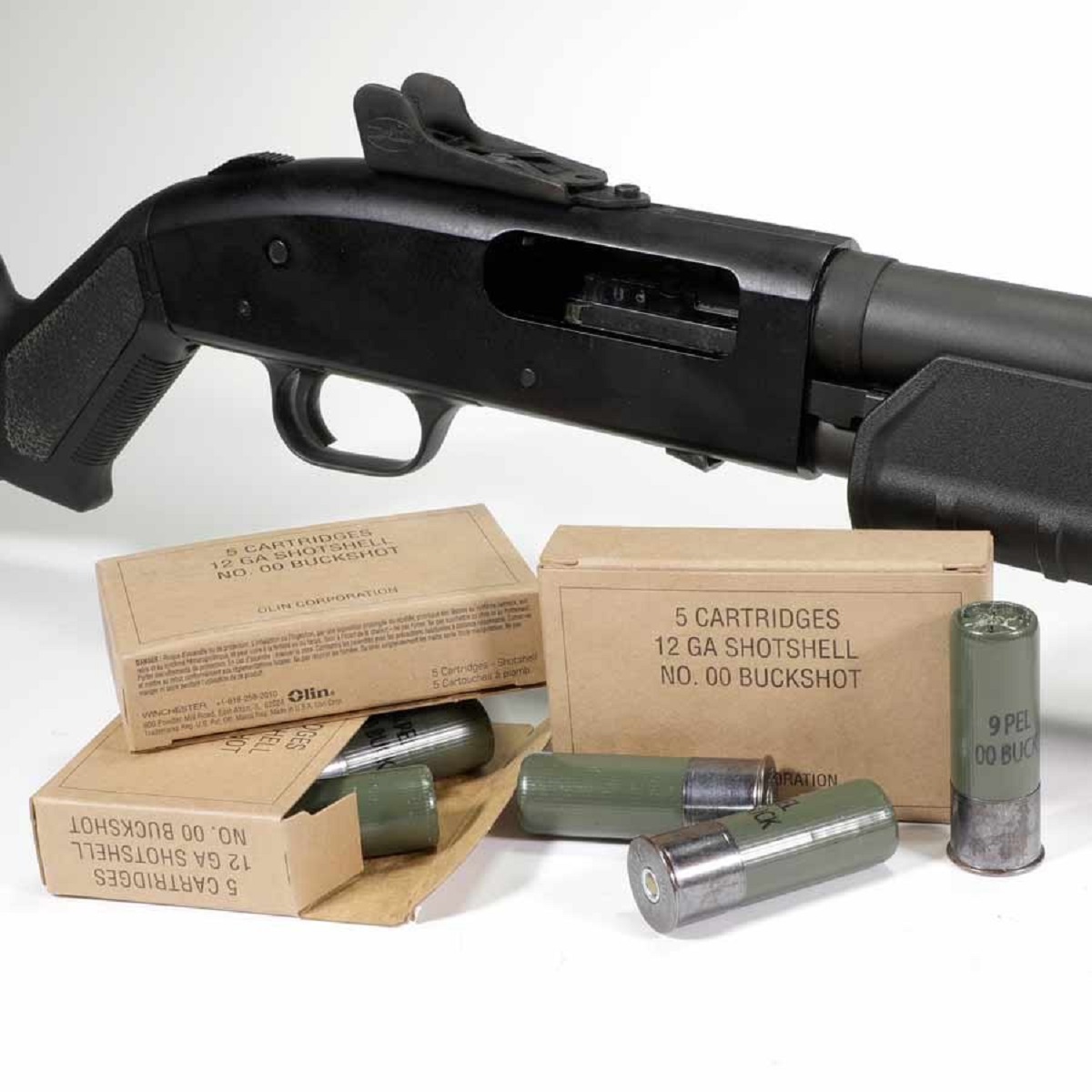Home>Home Security and Surveillance>What Is The Best Buckshot Gauge For Home Defense
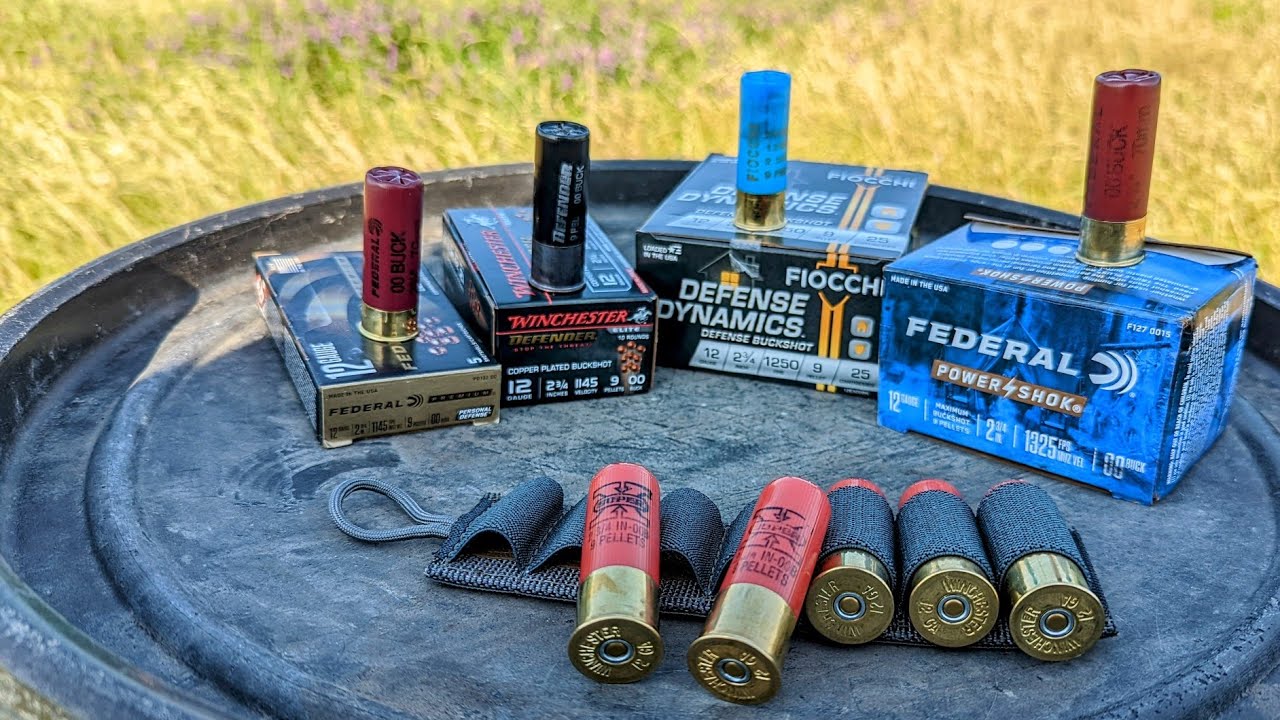

Home Security and Surveillance
What Is The Best Buckshot Gauge For Home Defense
Modified: March 6, 2024
Find out which buckshot gauge is best for home defense with our comprehensive guide. Enhance your home security and surveillance with the right choice.
(Many of the links in this article redirect to a specific reviewed product. Your purchase of these products through affiliate links helps to generate commission for Storables.com, at no extra cost. Learn more)
Introduction
When it comes to home defense, ensuring the safety and security of your loved ones is of utmost importance. One effective way to protect your home is by investing in a reliable home security and surveillance system. However, it is also essential to have a backup plan in case of a potential intruder. This is where a shotgun with buckshot ammunition can be a valuable asset.
Buckshot refers to multiple pellets or balls loaded into a shotgun shell, designed to provide a wide and devastating pattern upon firing. It is a highly effective close-range ammunition option for self-defense purposes. The gauge of the shotgun determines the size of the shell and, consequently, the number and size of the pellets it can accommodate.
In this article, we will explore the different buckshot gauges that are suitable for home defense and discuss the pros and cons of each option. By understanding the various factors involved, you can make an informed decision and choose the best buckshot gauge for your specific needs.
Key Takeaways:
- Choose a 12-gauge shotgun for home defense if you want powerful impact and a wide spread pattern, but be prepared for significant recoil and potential overpenetration through walls.
- Opt for a 20-gauge shotgun if you prioritize maneuverability and reduced recoil, but keep in mind it holds fewer pellets and may have limited ammunition options.
Understanding Gauge in Buckshot
The gauge of a shotgun is a unit of measurement that calculates the diameter of the shotgun’s barrel. It determines the size of the shell the shotgun can fire. As the gauge number decreases, the diameter of the barrel increases. For example, a 12-gauge shotgun has a larger barrel diameter than a 20-gauge shotgun.
When it comes to buckshot ammunition, the most common gauges used for home defense are 12 gauge, 16 gauge, and 20 gauge. Each gauge has its own unique characteristics and considerations, which we will delve into further in the following sections.
Factors to Consider in Home Defense Shotguns
Before we discuss the specific gauges, it’s essential to consider several factors when choosing a shotgun for home defense:
- Size and Weight: Home defense shotguns should be easy to maneuver in confined spaces, so consider the size and weight of the firearm before making a purchase.
- Recoil: Shotguns, especially those with larger gauges, can have significant recoil. It’s important to choose a shotgun that offers manageable recoil to prevent impairing your ability to remain accurate and controlled while firing.
- Capacity: Evaluate the shotgun’s magazine capacity, as having a higher round count can be advantageous in a self-defense situation.
- Reliability: A reliable shotgun is crucial for home defense. Look for a reputable brand known for producing reliable firearms.
- Sights and Accessories: Consider the sights and accessories that can enhance the shotgun’s usability and performance in a home defense scenario.
Now that we’ve covered the general factors to consider, let’s dive into the pros and cons of each buckshot gauge option for home defense.
Key Takeaways:
- Choose a 12-gauge shotgun for home defense if you want powerful impact and a wide spread pattern, but be prepared for significant recoil and potential overpenetration through walls.
- Opt for a 20-gauge shotgun if you prioritize maneuverability and reduced recoil, but keep in mind it holds fewer pellets and may have limited ammunition options.
Understanding Gauge in Buckshot
The gauge of a shotgun is a unit of measurement that calculates the diameter of the shotgun’s barrel. It determines the size of the shell the shotgun can fire. As the gauge number decreases, the diameter of the barrel increases. For example, a 12-gauge shotgun has a larger barrel diameter than a 20-gauge shotgun.
Now you might be wondering, why does the gauge matter when it comes to buckshot ammunition? Well, the gauge directly affects the number and size of the pellets or balls loaded into the shotgun shell. A larger gauge allows for bigger and more numerous pellets, while a smaller gauge means smaller and fewer pellets.
For home defense purposes, the most common gauge options for buckshot ammunition are 12 gauge, 16 gauge, and 20 gauge.
Let’s take a closer look at each gauge:
1. 12 Gauge
The 12-gauge shotgun is the most popular and widely used gauge for home defense. It offers a potent combination of power and versatility. With its larger shell size, a 12-gauge shotgun can accommodate more pellets, typically ranging from eight to fifteen, depending on the specific buckshot load. The larger payload of pellets provides a wider spread pattern, increasing the chances of hitting the target.
One advantage of choosing a 12-gauge shotgun is the availability and variety of ammunition options. There is a wide range of buckshot loads to choose from, allowing you to select the one that best suits your needs and preferences, whether that be maximum stopping power or reduced recoil.
However, it’s important to keep in mind that the recoil of a 12-gauge shotgun can be quite substantial, especially when firing heavy loads. This can make it more difficult to maintain rapid follow-up shots and may require additional practice to handle effectively. Additionally, the larger size of a 12-gauge shotgun may be less maneuverable in tight spaces, such as hallways or stairwells.
2. 16 Gauge
While not as popular as the 12-gauge or 20-gauge, the 16-gauge shotgun can be a viable option for home defense. It falls in between the 12-gauge and 20-gauge in terms of size and power. The 16-gauge shotgun can typically hold fewer pellets, ranging from six to ten, depending on the load.
The 16 gauge offers a balance between the power of a 12-gauge and the reduced recoil of a 20-gauge. It can still deliver sufficient stopping power while being more manageable to handle, especially for those who may find the recoil of a 12-gauge too intimidating.
However, one potential drawback of the 16-gauge shotgun is the limited availability of ammunition compared to the more popular gauge options. It may require more effort to find a variety of buckshot loads tailored for home defense purposes.
3. 20 Gauge
The 20-gauge shotgun is a lighter and more maneuverable option compared to the 12-gauge. It offers reduced recoil, making it easier to control, especially for individuals with smaller frames or less experience with firearms. The 20-gauge shotgun typically holds fewer pellets, ranging from five to eight, depending on the load.
One advantage of choosing a 20-gauge shotgun is its versatility. It can be used for multiple purposes, including hunting small game and even some bird hunting. This makes it a practical choice for individuals who want a shotgun for both home defense and recreational shooting.
However, due to the smaller size of the shotgun shell, the spread pattern of the pellets may not be as wide as a 12-gauge shotgun. This means a slightly reduced chance of hitting the target with each shot. Additionally, the availability of specific buckshot loads may be more limited compared to the 12-gauge.
Now that we have a better understanding of each buckshot gauge, let’s weigh the pros and cons of each option in the context of home defense.
Factors to Consider in Home Defense Shotguns
Before delving into the specific pros and cons of different buckshot gauges for home defense, it’s essential to consider several factors when choosing a shotgun:
- Size and Weight: Home defense shotguns should be easy to maneuver in confined spaces, such as hallways and doorways. Consider the size and weight of the shotgun to ensure it can be comfortably handled by all members of your household.
- Recoil: Shotguns, especially those with larger gauges, can generate significant recoil. This can impact accuracy and follow-up shot capabilities, particularly for inexperienced or smaller individuals. Look for shotguns designed to mitigate recoil, such as those with recoil pads or adjustable stocks.
- Capacity: The capacity of the shotgun’s magazine is an important consideration. Higher magazine capacity can provide more rounds without needing to reload, giving you crucial extra time in a life-threatening situation. Look for shotguns with extended magazine options if possible.
- Reliability: A reliable shotgun is vital for home defense. Seek out shotguns from reputable manufacturers known for producing reliable firearms. Consider reading reviews and seeking recommendations from experienced firearm owners.
- Sights and Accessories: Consider the sighting system and accessories available for the shotgun you choose. Good sighting options, such as ghost ring sights or red dot sights, can enhance aiming and target acquisition in low-light or high-stress situations. Additionally, accessories such as weapon-mounted lights or lasers can help with identifying and disorienting potential threats.
By carefully considering these factors, you can select a shotgun that best suits your individual needs and circumstances.
Keep in mind that it is essential to practice using your chosen shotgun regularly. Familiarize yourself with the operation and handling of the firearm, train in safe firearm handling techniques, and practice shooting at a range. This will help build confidence and proficiency in using your shotgun effectively if the need arises.
Now that we have covered the crucial factors to consider let’s move on to discussing the specific pros and cons of each buckshot gauge for home defense purposes.
Pros and Cons of Different Buckshot Gauges
When it comes to choosing the best buckshot gauge for home defense, it’s essential to weigh the advantages and disadvantages of each option. Here are the pros and cons of the most common buckshot gauges used in home defense:
Read more: What Kind Of 12 Gauge Ammo For Home Defense
12 Gauge Buckshot for Home Defense
Pros:
- Wide range of ammunition options offering various loads and purposes.
- Powerful and effective at close range.
- Greater number of pellets, increasing the chances of hitting the target.
- Wider spread pattern for a larger area of coverage.
Cons:
- Significant recoil, making multiple follow-up shots more challenging.
- Larger size and weight can be less maneuverable in tight spaces.
- Potentially overpenetration through walls, increasing risks to bystanders.
16 Gauge Buckshot for Home Defense
Pros:
- Offers a balance between power and reduced recoil.
- Can still provide sufficient stopping power while being more manageable to handle.
- Smaller size and weight make it easier to maneuver in confined spaces.
Cons:
- Less common, with limited availability of ammunition options.
- Smaller number of pellets may result in a narrower spread pattern.
20 Gauge Buckshot for Home Defense
Pros:
- Lighter and more maneuverable option.
- Reduced recoil, making it easier to control.
- Can be used for both home defense and recreational shooting.
Cons:
- Smaller number of pellets, potentially resulting in a narrower spread pattern.
- Availability of specific buckshot loads may be more limited.
Remember, these pros and cons may vary depending on the specific shotgun model and ammunition used. It is crucial to test different loads to identify the most reliable and effective combination for your home defense needs.
Ultimately, the best buckshot gauge for home defense is the one that suits your preferences, physical abilities, and the layout of your home. Consider factors such as recoil tolerance, maneuverability, and ammunition availability when making your decision.
Selecting a shotgun with an appropriate buckshot gauge is just the first step. Ensuring proper training, safe storage, and adherence to local laws and regulations are equally important aspects of responsible home defense preparedness.
Now that we have examined the pros and cons of different buckshot gauges, you can make an informed decision about which option is best suited for your home defense needs.
12 Gauge Buckshot for Home Defense
The 12-gauge buckshot is the most popular and widely used gauge for home defense. It offers a potent combination of power and versatility, making it a popular choice among homeowners seeking a reliable self-defense option.
Pros:
- Wide range of ammunition options: One of the significant advantages of the 12-gauge buckshot is the vast variety of ammunition available. This allows you to select the load that best suits your specific needs, whether it’s maximum stopping power or reduced recoil.
- Powerful and effective at close range: The 12-gauge buckshot is known for its stopping power. With its larger shell size, a 12-gauge shotgun can hold more pellets, typically ranging from eight to fifteen, depending on the specific buckshot load. The larger payload of pellets increases the chances of hitting the target and provides a wider spread pattern, maximizing effectiveness at close range.
- Wider spread pattern: The wide spread pattern of the pellets in a 12-gauge buckshot maximizes the coverage area, increasing the probability of hitting the intended target. This can be especially valuable in high-stress situations where precise aiming may not be possible.
Cons:
- Significant recoil: The 12-gauge shotgun’s larger size and more powerful ammunition contribute to substantial recoil. This can make it more challenging to maintain rapid follow-up shots and may require additional practice to handle effectively. It is vital to consider your comfort level and recoil tolerance when choosing a 12-gauge shotgun.
- Larger size and weight: The larger size and weight of a 12-gauge shotgun can be less maneuverable in confined spaces, such as hallways or stairwells. This can be a crucial consideration if you anticipate potential home defense scenarios in these areas. However, with the right training and practice, the size and weight can be mitigated.
- Potential overpenetration: Due to the power of a 12-gauge buckshot, there is a risk of overpenetration through walls and other barriers, increasing the risks to bystanders. It is essential to consider the layout of your home and take precautions to minimize the potential for collateral damage.
Despite these potential drawbacks, the 12-gauge buckshot remains a popular choice for home defense due to its proven effectiveness and availability of ammunition options. However, it is crucial to assess your specific needs and capabilities to determine if the 12-gauge shotgun is the right fit for you.
Remember, proper training and practice are vital when using any firearm for self-defense. Familiarize yourself with the operation and handling of your shotgun, practice safe firearm handling techniques, and regularly engage in target practice at a range to build confidence and proficiency.
By carefully considering the pros and cons of the 12-gauge buckshot, you can make an informed decision and select the best option for your home defense needs.
Read more: What Is The Best Dog For Home Defense
16 Gauge Buckshot for Home Defense
The 16-gauge buckshot shotgun is less common than the 12-gauge or 20-gauge, but it can still be a viable option for home defense. It offers a balance between power and reduced recoil, making it an appealing choice for those who may find the recoil of a 12-gauge too intimidating.
Pros:
- Balance of power and reduced recoil: The main advantage of the 16-gauge buckshot is its ability to offer sufficient stopping power while being more manageable to handle. The smaller gauge size contributes to reduced recoil compared to the 12-gauge, making it easier to control and allowing for quicker follow-up shots.
- Maneuverability: The 16-gauge shotgun is lighter and more maneuverable compared to the 12-gauge. Its smaller size and weight can be advantageous in confined spaces, such as hallways or stairwells, where ease of maneuverability is crucial.
Cons:
- Limited availability of ammunition: One potential drawback of the 16-gauge buckshot option is the limited availability of ammunition compared to the more popular gauge choices. This might require extra effort to find a variety of buckshot loads specifically tailored for home defense purposes.
- Smaller number of pellets: The 16-gauge shotgun typically holds fewer pellets, ranging from six to ten, depending on the load. This smaller payload of pellets may result in a narrower spread pattern compared to the 12-gauge. It is important to consider the trade-off between the number of pellets and the spread pattern when evaluating the effectiveness of the 16-gauge buckshot for home defense.
Despite its lower popularity, the 16-gauge buckshot offers a suitable option for individuals seeking a shotgun with a balance of power and manageable recoil. It combines ease of handling with enough stopping power to be effective in self-defense situations.
When considering the 16-gauge buckshot for home defense, it is essential to weigh the pros and cons against your unique needs and circumstances. Remember to factor in both the availability of ammunition and the potential effects of the smaller payload on the spread pattern.
As with any shotgun, regardless of gauge, proper training and practice are essential for safe and effective use. Familiarize yourself with the operation and handling of your 16-gauge shotgun, practice shooting at the range, and hone your skills to ensure confidence and proficiency in a home defense scenario.
By carefully assessing the advantages and disadvantages of the 16-gauge buckshot, you can make an informed decision and select the most suitable option for your home defense needs.
The best buckshot gauge for home defense is typically 12 gauge. It offers a good balance of power and manageable recoil for most shooters.
20 Gauge Buckshot for Home Defense
The 20-gauge buckshot shotgun is a lighter and more maneuverable option compared to the larger gauges, such as the 12-gauge. It offers reduced recoil, making it easier to control, especially for individuals with smaller frames or those who may be sensitive to heavier recoil.
Pros:
- Lightweight and maneuverable: The 20-gauge shotgun is lighter and more compact than the 12-gauge, making it easier to handle and maneuver, particularly in confined spaces. This can be advantageous when navigating hallways or engaging targets in close-quarters situations.
- Reduced recoil: One of the main advantages of the 20-gauge buckshot is its reduced recoil compared to the larger gauges. This makes it more manageable to control and allows for quicker follow-up shots. It can be a suitable option for shooters with less experience or those who may have difficulty handling the recoil of a larger shotgun.
- Versatility: The 20-gauge shotgun can serve dual purposes, suitable for both home defense and recreational shooting. It can be used for hunting small game or even some bird hunting, making it a practical choice for individuals looking for a versatile firearm.
Cons:
- Smaller number of pellets: The 20-gauge shotgun typically holds fewer pellets compared to the 12-gauge, ranging from five to eight, depending on the load. This smaller payload of pellets may result in a narrower spread pattern compared to larger gauges, reducing the chances of hitting the target with each shot.
- Availability of specific ammunition: The availability of specific buckshot loads may be more limited for the 20-gauge compared to the more popular 12-gauge option. It may require more effort to find a wide variety of specialized buckshot loads specifically designed for home defense purposes.
Despite its smaller size and reduced payload, the 20-gauge buckshot shotgun can still provide effective home defense capabilities while offering the advantages of lighter weight and reduced recoil. It strikes a balance between maneuverability and stopping power, making it an attractive choice for individuals seeking a versatile and user-friendly firearm.
When considering the 20-gauge buckshot for home defense, it is essential to keep in mind the trade-off between the number of pellets and the spread pattern, as well as the availability of ammunition options for this gauge.
As with any firearm, proper training and practice are crucial for safe and effective use. Familiarize yourself with the operation and handling of your 20-gauge shotgun, practice shooting at the range, and develop your skills to ensure proficiency in a home defense scenario.
By carefully considering the advantages and disadvantages of the 20-gauge buckshot, you can make an informed decision and choose the most suitable option for your home defense needs.
Conclusion
When it comes to choosing the best buckshot gauge for home defense, there are several important factors to consider. The 12-gauge, 16-gauge, and 20-gauge shotguns are the most common options, each with their own pros and cons.
The 12-gauge buckshot shotgun is the most popular choice for home defense due to its wide range of ammunition options, powerful impact at close range, and wider spread pattern. However, it comes with significant recoil and a larger size and weight, which may affect maneuverability in tight spaces.
The 16-gauge buckshot shotgun offers a balance between power and reduced recoil, making it more manageable for those who find the recoil of a 12-gauge intimidating. Although it has limited ammunition availability and a smaller number of pellets, it still provides adequate stopping power for home defense scenarios.
The 20-gauge buckshot shotgun is a lightweight and maneuverable option with reduced recoil, making it easier to handle. While it holds fewer pellets compared to larger gauges, it offers versatility for both home defense and recreational shooting.
Ultimately, the best buckshot gauge for home defense depends on individual preferences, physical abilities, and the layout of your home. It is important to consider factors such as recoil tolerance, maneuverability, power, and availability of ammunition when making a decision.
Regardless of the gauge you choose, proper training, practice, and responsible firearm ownership are crucial. Familiarize yourself with the operation and handling of your chosen shotgun, practice safe firearm handling techniques, and regularly engage in target practice to build confidence and proficiency.
Remember, selecting a shotgun with the appropriate buckshot gauge is just the first step. It is equally important to secure your home, invest in a reliable home security and surveillance system, and be prepared with a well-thought-out self-defense plan.
By considering the factors discussed in this article and conducting thorough research, you can make an informed decision and select the best buckshot gauge for your specific home defense needs. Prioritize safety, seek proper training, and stay informed about local laws and regulations to ensure the responsible use of your chosen shotgun for home defense.
Stay vigilant, be prepared, and prioritize the safety and security of your loved ones in your pursuit of a reliable and effective home defense solution.
Frequently Asked Questions about What Is The Best Buckshot Gauge For Home Defense
Was this page helpful?
At Storables.com, we guarantee accurate and reliable information. Our content, validated by Expert Board Contributors, is crafted following stringent Editorial Policies. We're committed to providing you with well-researched, expert-backed insights for all your informational needs.
